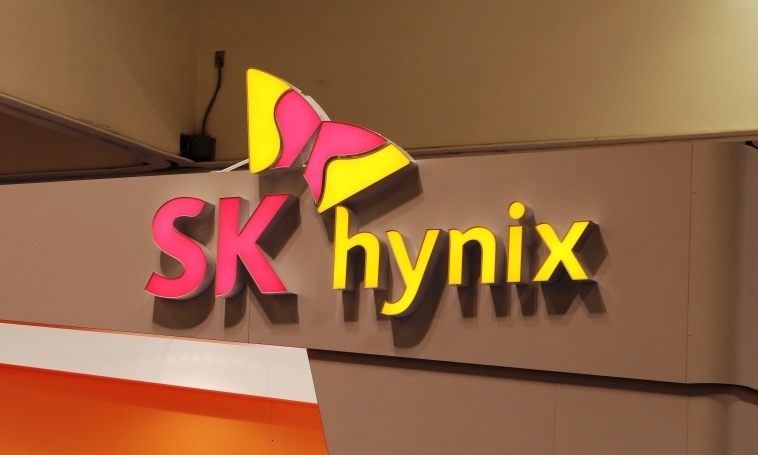Although SK Hynix isn’t as well known as Toshiba, Samsung or Intel/Micron (IMFT), they are one of the few in the world that own the fab. By owning the fab, we mean that SK Hynix manufacturers NAND flash memory. In the SSD world, the key to ultimate success (some might say) is to be able to market a complete package and, by that, we mean sell a product that is as close to 100% proprietary as possible.
 A typical SSD might consist of NAND flash memory and maybe even a cache; SK Hynix has this. Some time ago, however, SK Hynix recognized that they needed a controller for their SSD success and, in that, they bought Link-A-Media-Devices (LAMD) who had only recently introduced a new SATA 3 controller, one that was showing some success. With that, SK Hynix was ready to enter the SSD world with the ability to show themselves as a major player, and their display booth at FMS 2013 did just that.
A typical SSD might consist of NAND flash memory and maybe even a cache; SK Hynix has this. Some time ago, however, SK Hynix recognized that they needed a controller for their SSD success and, in that, they bought Link-A-Media-Devices (LAMD) who had only recently introduced a new SATA 3 controller, one that was showing some success. With that, SK Hynix was ready to enter the SSD world with the ability to show themselves as a major player, and their display booth at FMS 2013 did just that.
In approaching the booth, one of the first signs observed was that identifying their 3D NAND flash memory (No…Samsung is not alone) and, on closer approach, they even have a very interesting display allowing one a close up view of 3D memory:

 Next up, we got a close look at m.2 SSD sampling. Unfortunately we didn’t see those blazing PCIe speeds that we have been seeing as of late , but they did show typical LAMD performance of 530MB/s read and 420MB/s write with 75k IOPS as many recognize from Corsair and Seagate SSDs.
Next up, we got a close look at m.2 SSD sampling. Unfortunately we didn’t see those blazing PCIe speeds that we have been seeing as of late , but they did show typical LAMD performance of 530MB/s read and 420MB/s write with 75k IOPS as many recognize from Corsair and Seagate SSDs.
 Also on display, we had enterprise and consumer variations of SK Hynix’ new offerings, both equipped with the LAMD controller and displaying simlar speed and IOPS that we spoke of above. The consumer SSD is the blue PCB shown on the left with the enterprise variation dressed up in green on the right.
Also on display, we had enterprise and consumer variations of SK Hynix’ new offerings, both equipped with the LAMD controller and displaying simlar speed and IOPS that we spoke of above. The consumer SSD is the blue PCB shown on the left with the enterprise variation dressed up in green on the right.

 The one thing that does weigh on my mind is what will become of the LAMD contracts with both Seagate and Corsair (Seagate actually being next to LSI on the FMS floor) when things get ironed out. I asked a Hynix rep (who wished to remain unnamed) who was very reluctant but did state that a great deal of discussion will occur with just this topic in mind. In the past week, both Seagate and SK Hynix stated that it is an interesting situation because both (in essence) are now one another’s competitors. LSI will be the inevidable solution to this for Seagate and, who knows, Corsair might do much the same with all that LSI seems to have on the table at this point in the SSD game.
The one thing that does weigh on my mind is what will become of the LAMD contracts with both Seagate and Corsair (Seagate actually being next to LSI on the FMS floor) when things get ironed out. I asked a Hynix rep (who wished to remain unnamed) who was very reluctant but did state that a great deal of discussion will occur with just this topic in mind. In the past week, both Seagate and SK Hynix stated that it is an interesting situation because both (in essence) are now one another’s competitors. LSI will be the inevidable solution to this for Seagate and, who knows, Corsair might do much the same with all that LSI seems to have on the table at this point in the SSD game.
 The SSD Review The Worlds Dedicated SSD Education and Review Resource |
The SSD Review The Worlds Dedicated SSD Education and Review Resource | 
LSI needs to put the SF-3000 ‘on the table’…lol